Macular Degeneration
Eye Conditions
Cataract
CSCR
Diabetic Retinopathy
Epiretinal Membrane
Flashes and Floaters
Glaucoma
Macular Degeneration
Macular Hole
Retinal Detachment
Retinal Vein Occlusion
Uveitis
Vitreomacular Traction
Investigations
Procedures
The macula ages like the rest of the body. When the aging process severely damages the macular tissue, it is called macular degeneration. The most common sign of aging of the macula is the appearance of drusen, which are deposits of lipid material under the macula. Further aging can lead to either dry or wet types of macular degeneration.
Dry Macular Degeneration
In dry macular degeneration, the macula becomes gradually thinner. Eventually, most of the macula can become worn out. Vision loss is gradual.
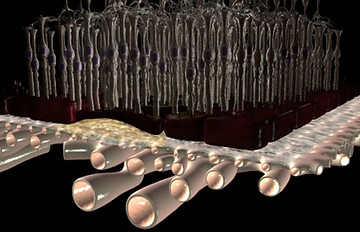
Drusen
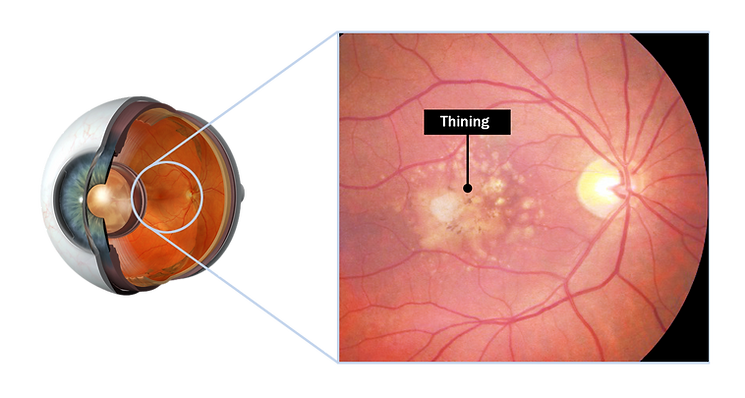
Wet Macular Degeneration
With wet macular degeneration, new blood vessels develop under the macula. These blood vessels are fragile, so they leak fluid and bleed, and eventually scar. Wet macular degeneration leads to a rapid loss of vision.
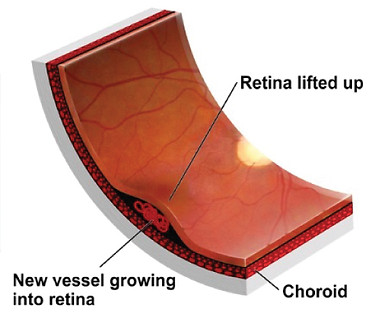
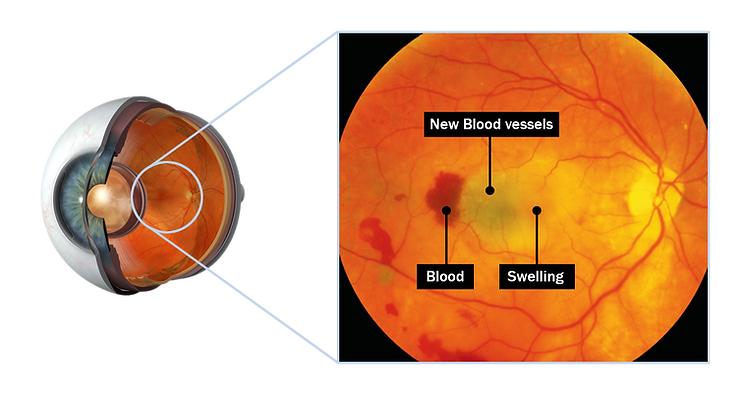
Important Symptoms

Confirming Diagnosis

OCT scan showing blood and fluid causing swelling and distortion of the macula.
Fluorescein angiogram outlines the leaking new blood vessels with dye.
-
Blurred vision
-
Distortion
-
Gaps in vision
-
Faded colour
-
Loss of contrast
Treating Wet Macular Degeneration
Wet macular degeneration cannot be cured. Treatments are aimed at controlling the disease and reducing damage to the macula. This is analogous to the treatment for high blood pressure or diabetes. When you start treatments for macular degeneration, you are embarking on a long-term program of therapies.
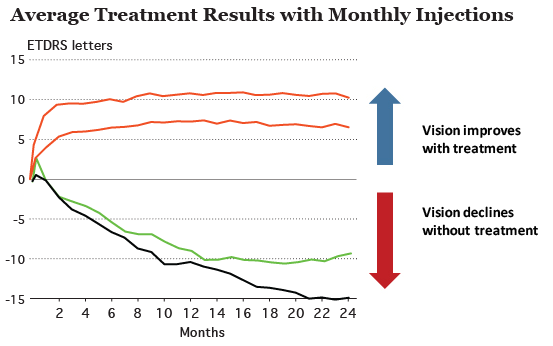
About one in ten patients will not respond to anti-VEGF treatment. Of the remainder, about a half will see improvement in vision, while the other half will achieve stable vision.
Anti-VEGF Injections
VEGF is the substance produced in the macula that causes the new blood vessels to grow. Anti-VEGF medications block the effect of this substance. They are given as an injection into the eye cavity. This achieves the maximum concentration of the drug where it is needed most. There are three anti-VEGF medications available.

Lucentis and Eylea are used when the new vessels affect the centre of the macula. These drugs are supported by Pharmaceutical Benefits Scheme (PBS). When the new vessels do not involve the centre of the macula, Avastin is usually used.
The diagnosis of the new vessels needs to be confirmed by fluorescein angiography before treatment can begin. The injections are initially given every 4 weeks and the response is monitored by OCT scan. When the new vessels have been stabilised, the injections can be given less frequently, but some maintenance treatment will be needed indefinitely.
Injection into the eye is a serious treatment. If the vision blurs significantly or the eye becomes red and painful, call the emergency number immediately.
-
Anti-VEGF injections are given under local anaesthesia.
-
The injection is usually painless, but occasionally brief discomfort is felt if the needle passes near a nerve
-
The eye needs to be sterilized carefully with antiseptics to minimize risk of infection.
-
Rarely, the eye can become very uncomfortable hours after injection due to the burning effects of antiseptics.
-
Risk of injection into the eye include infection, bleeding and retinal detachment.
Preventing Macular Degeneration
If there are signs of aging in your macula, following steps will help prevent or slow the progression of macular degeneration.
-
Don’t smoke
-
Keep healthy diet and exercise
-
Wear sunglasses outdoors
-
Nutritional supplements: but only after a thorough discussion
-
Check your vision with Amsler Chart

You Should Eat:
-
Fish 2 – 3 times a week
-
Fresh fruit
-
Leafy, coloured vegetables
-
Use olive oil to cook (not virgin oil)
-
Fresh nuts (Almonds, Brazil nuts, Walnuts)
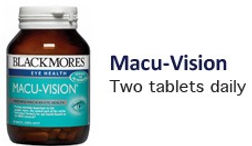

Avoid:
-
Avoid fatty, fried foods
-
Eat less red meat (cut out fat)
-
Eat less salami and sausages
-
Use less vegetable oil
